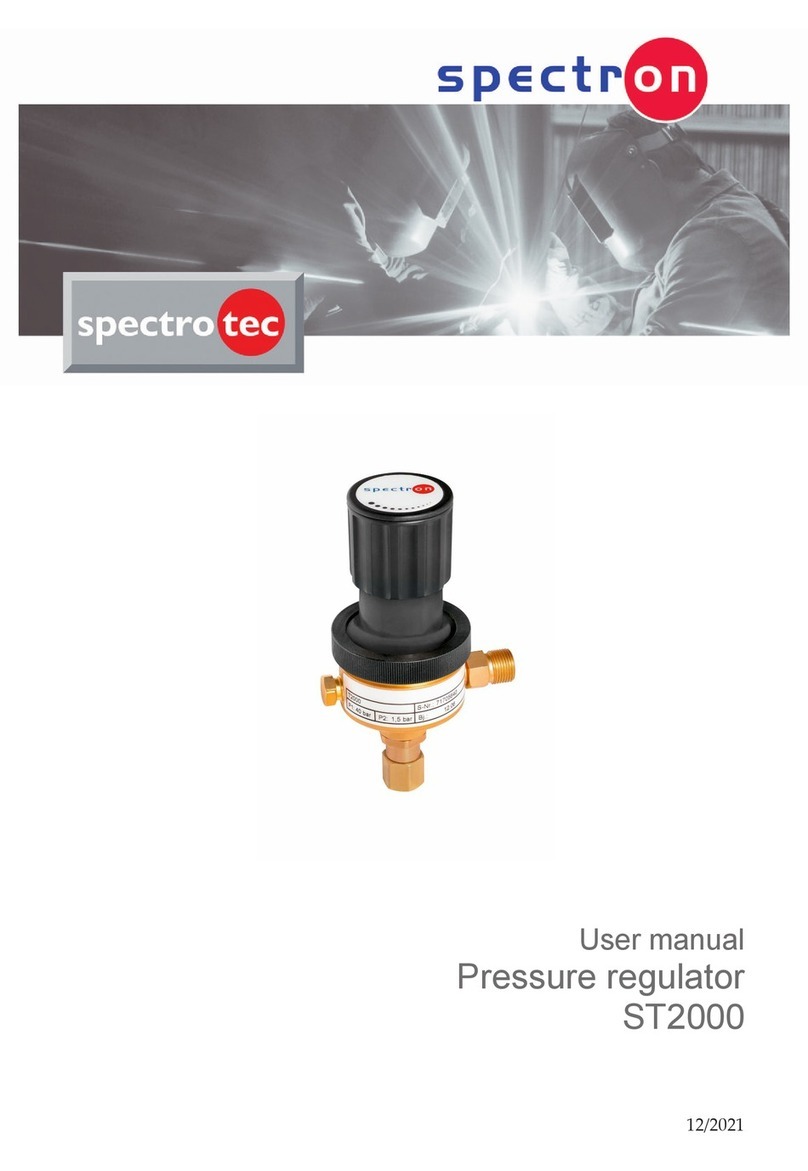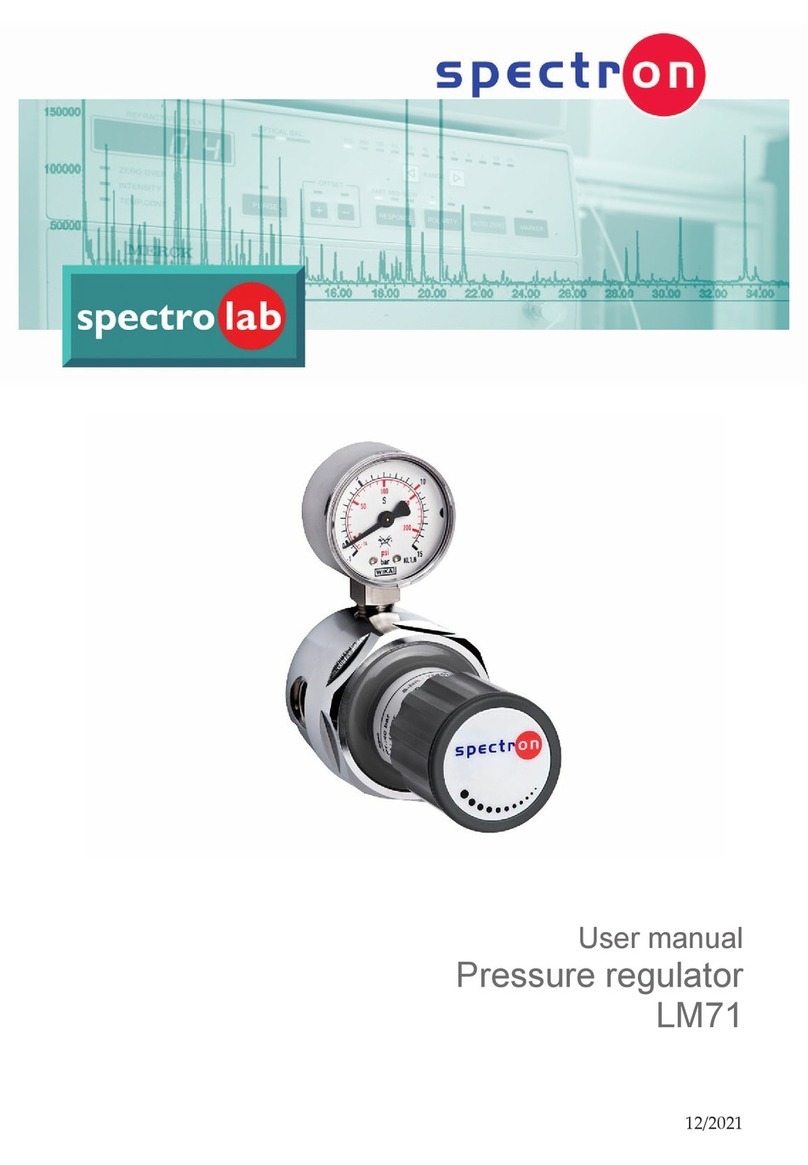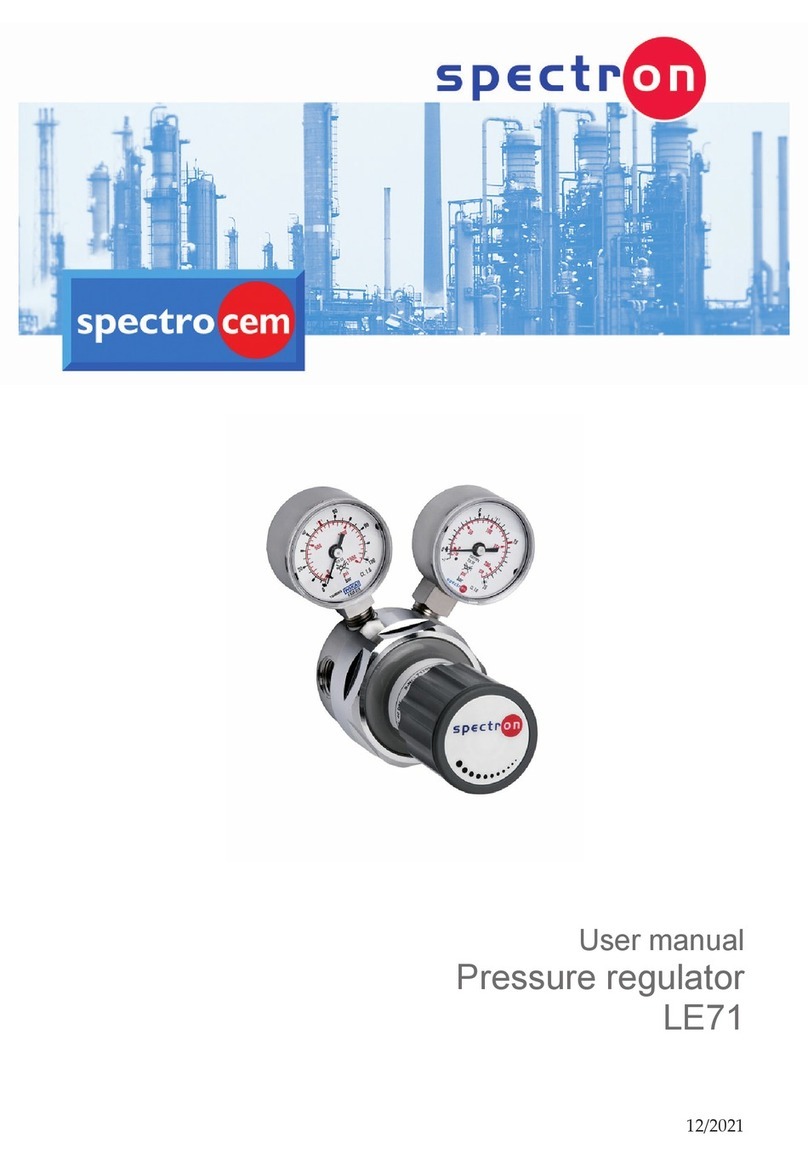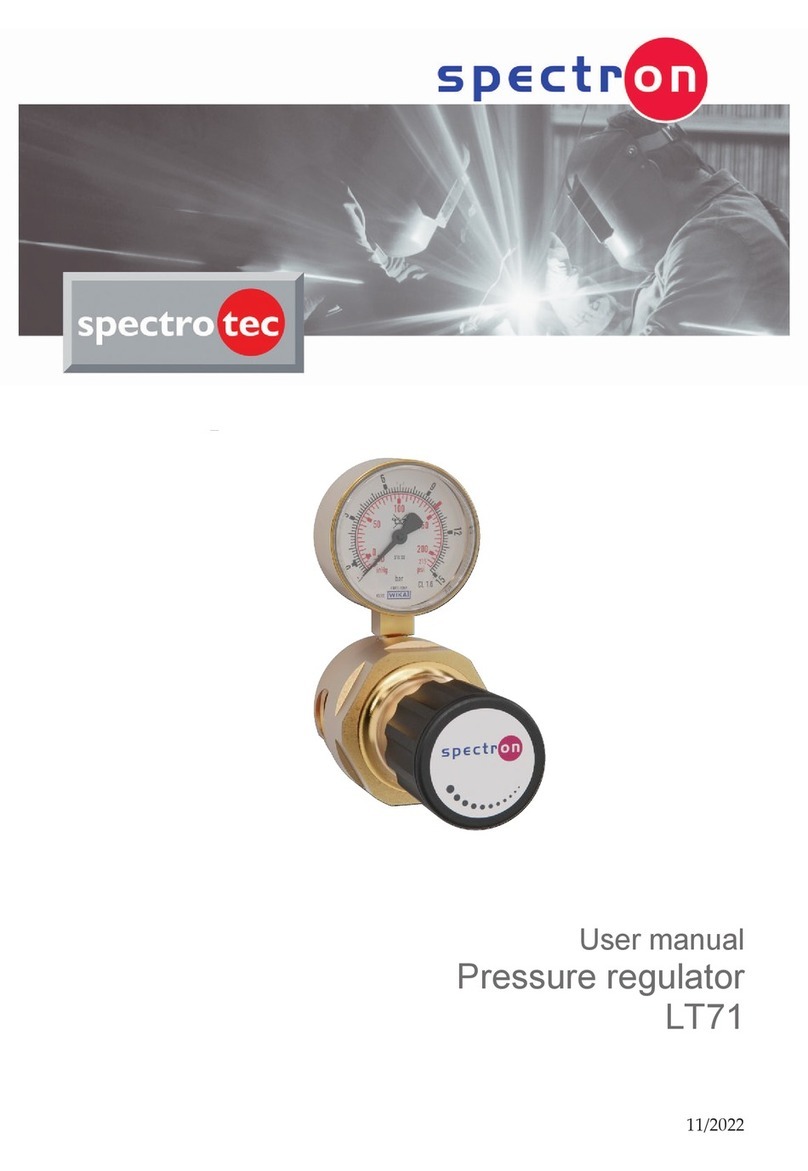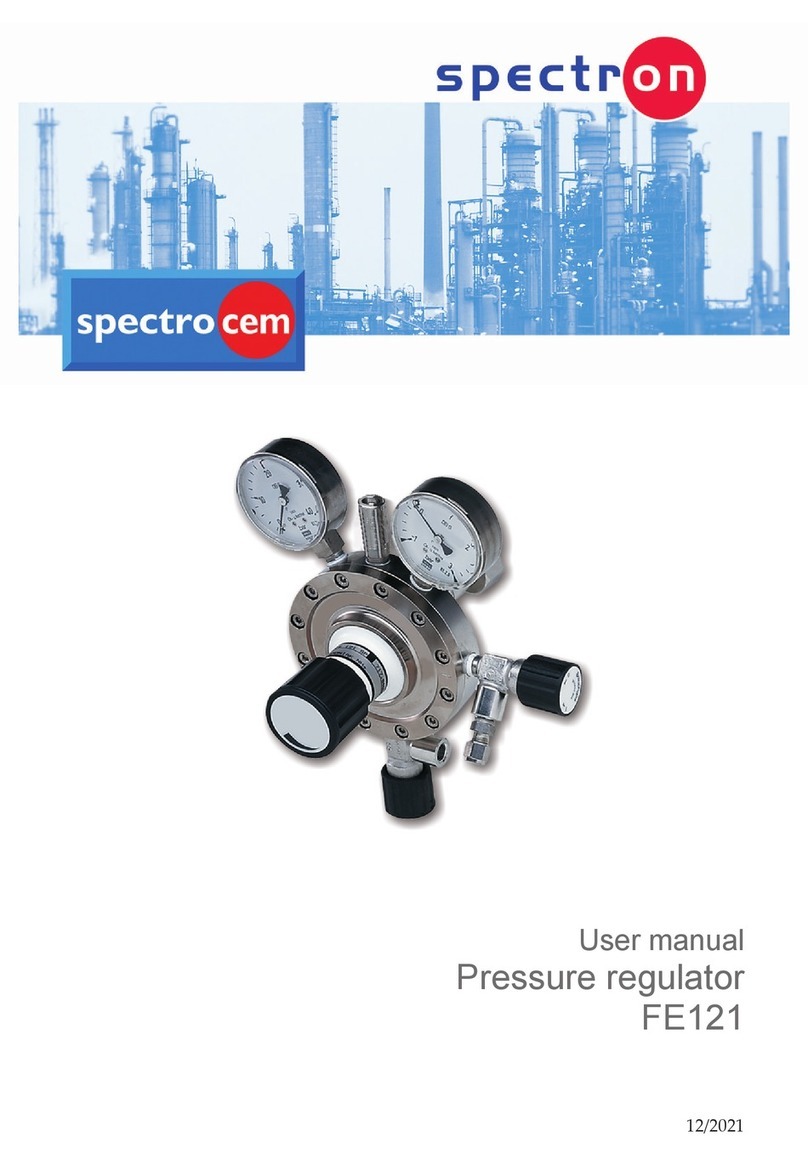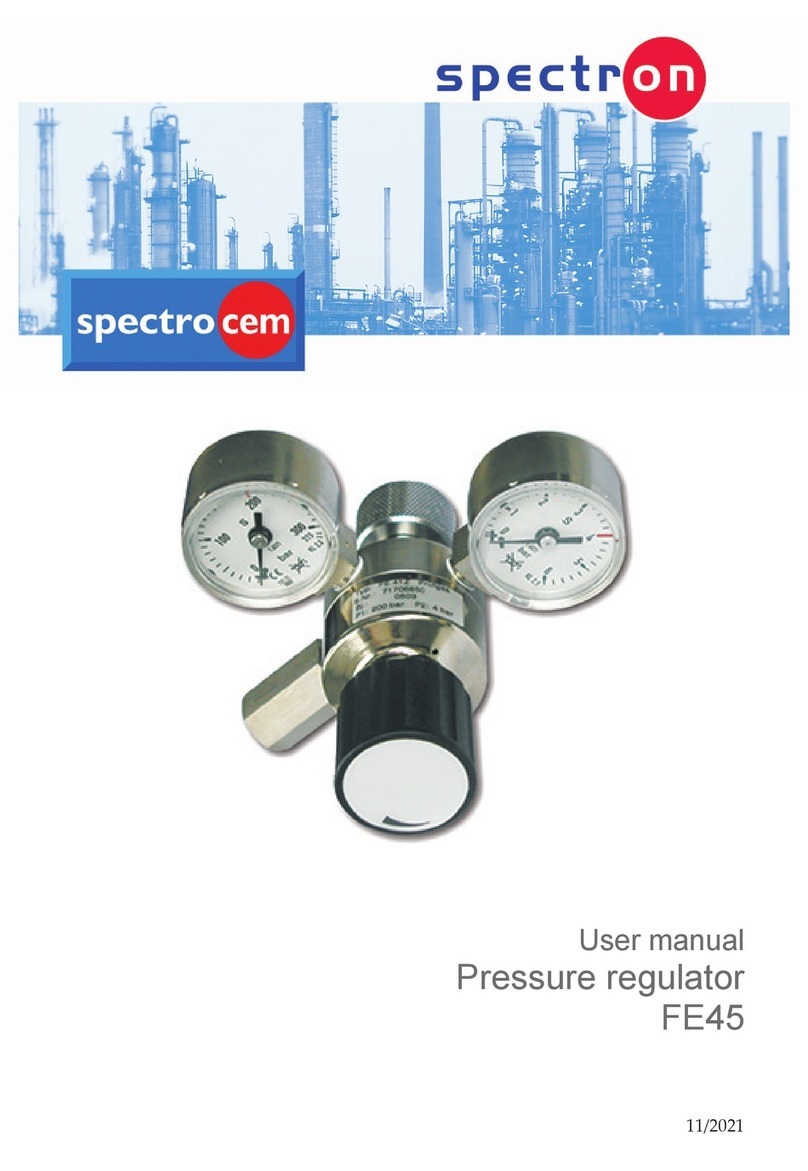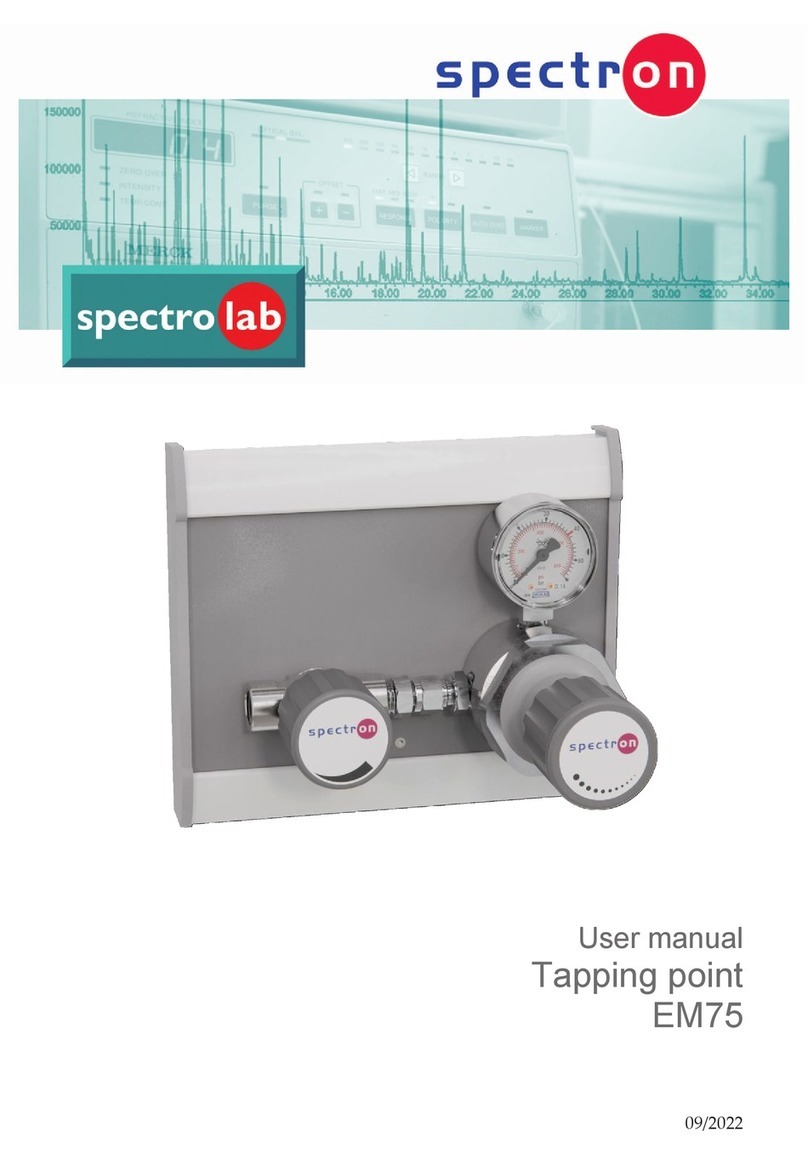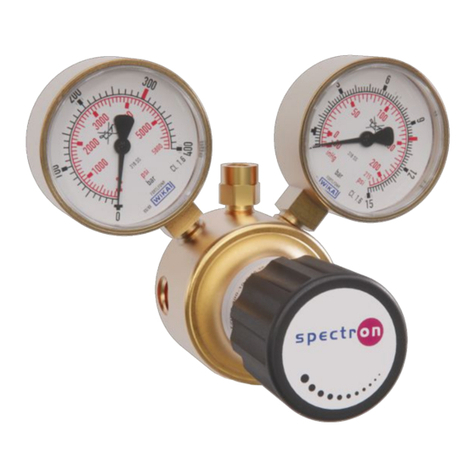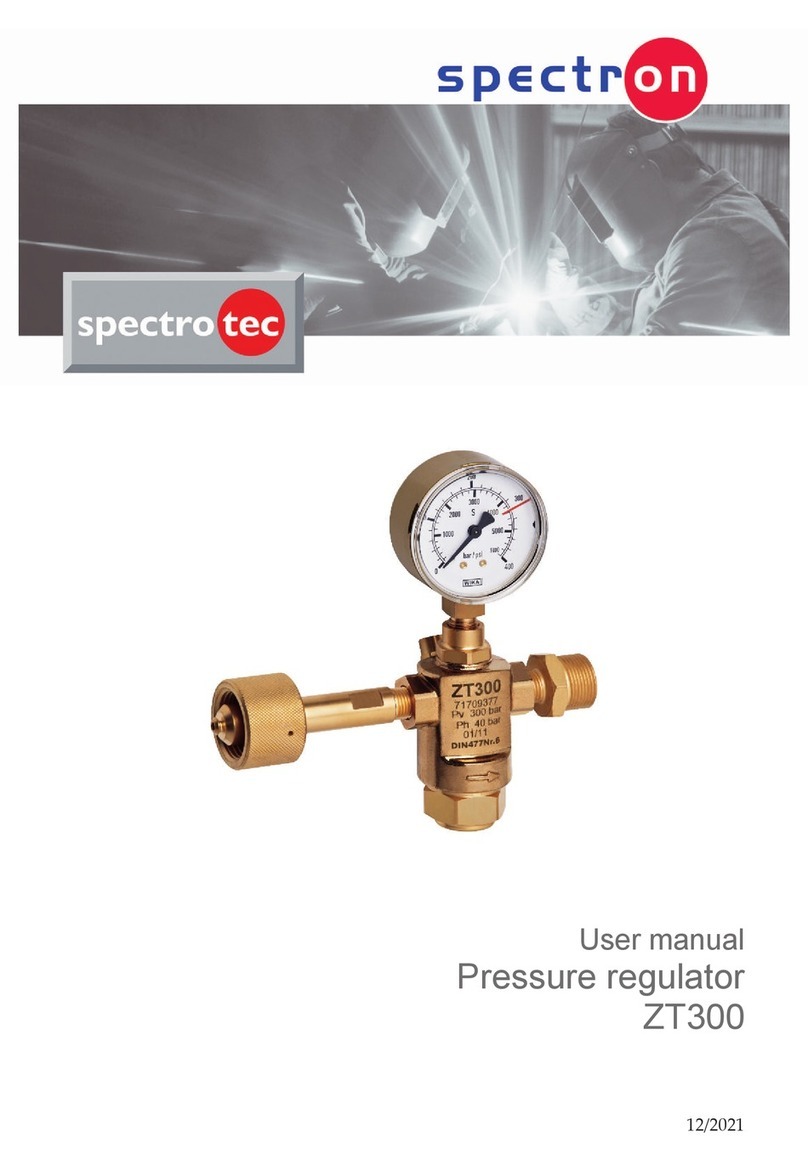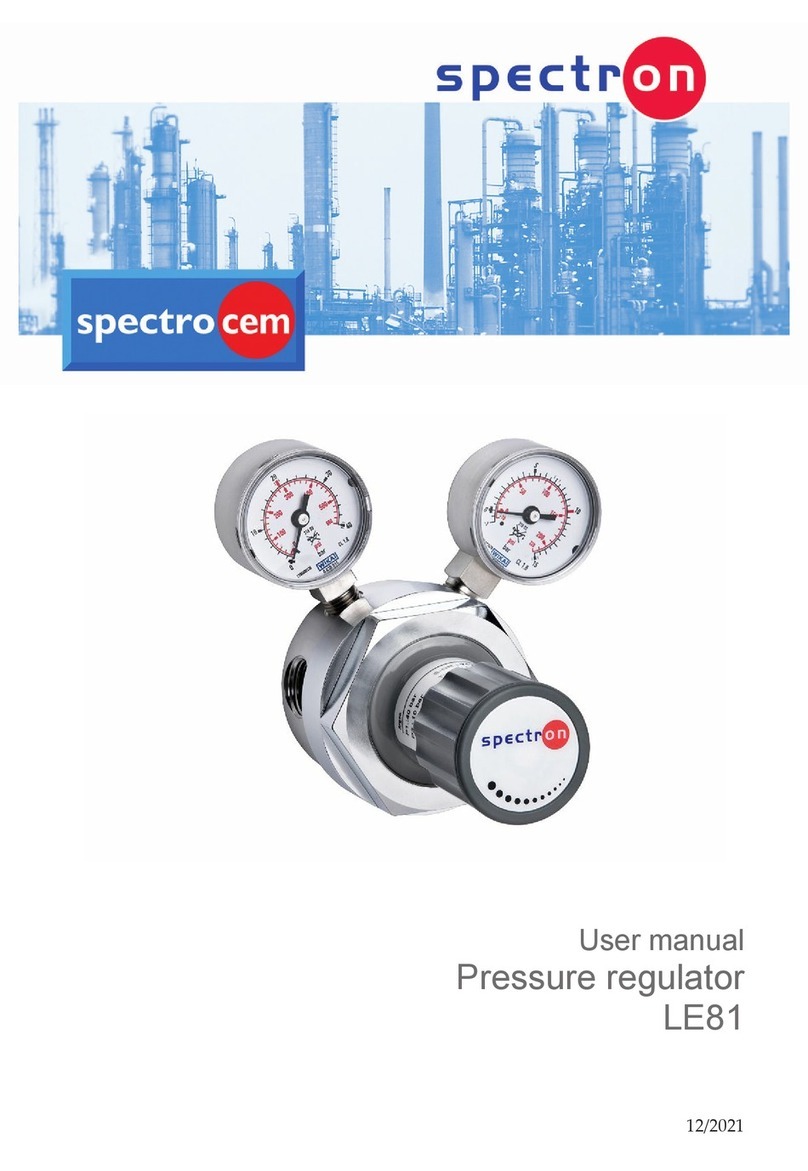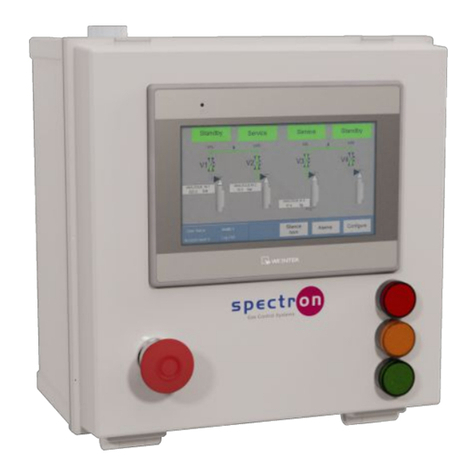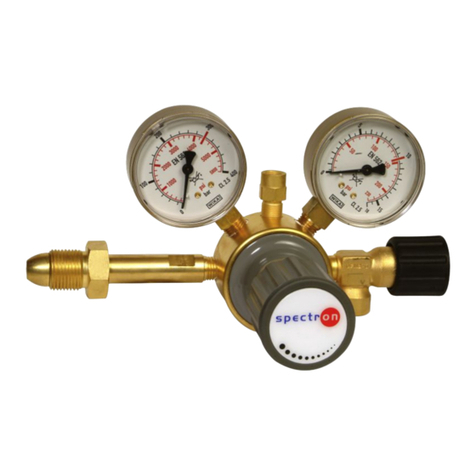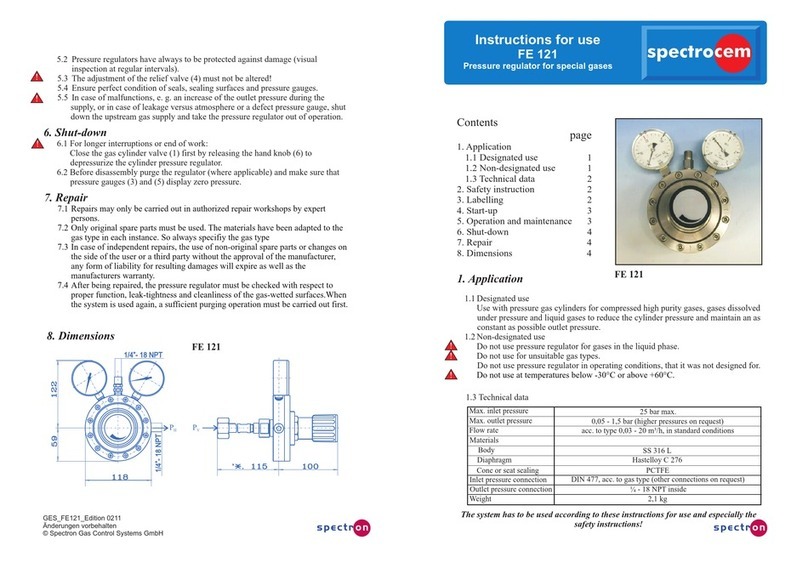GES_FE51-52-53SP+FE121SP_1116.docx 7
2. For your safety
Risk of fatal injury!
The pressure regulator may be damaged by unauthorised
changes or modifications and may no longer work as
intended. There is a risk of the system malfunctioning,
catching fire or being damaged.
No changes or modifications may be made without the
written approval of the manufacturer's authorised technical
experts.
Risk of fatal injury!
If gases other than those specified on the type plate are
used, there is a risk of the system malfunctioning, catching
fire or being damaged.
Use only for the gases indicated on the device.
If there are no gas types specified on the pressure
regulator, the manufacturer must be consulted to establish
which gases it can be used with.
On no account may the pressure regulator be put into
operation without this information.
Risk of fatal injury!
Where the pressure regulator is operated with combustible,
toxic or corrosive gases, the respective gas can escape into
the environment if the relief valve is triggered.
The relief valves of pressure regulators for combustible,
toxic or corrosive gases must be equipped with a pipeline
routing the escaping gases to a safe and legally compliant
recycling facility.
Risk of fatal injury!
Gas escaping in an uncontrolled manner in closed rooms
can reduce the oxygen content in the air to a potentially fatal
level.
The blow-off pipe of systems operated in closed rooms
must be routed into the open air. Toxic, corrosive or
otherwise environmentally harmful gases must be
disposed of in accordance with the applicable regulations.
Risk of fatal injury!
Oxygen escaping in an uncontrolled manner in closed
rooms can lead to a dangerous rise in the oxygen content in
the air, increasing the risk of clothing and objects igniting.
Route the blow-off pipe of oxygen systems operated in
closed rooms into the open air, and avoid open flames.
In addition, observe the instructions in EIGA document NL
79/04/D.
Risk of fatal injury!
If components which are not suitable for the pressure range
of the cylinder pressure regulator are connected, they may
rupture under the pressure load.
All accessories to be connected (screw fittings, pipes,
fittings etc.) must be suitable for the pressure range
specified on the type plate of the cylinder pressure
regulator.
If the pressure regulator is used outside the specified
ambient temperature range, there is a risk of the system
malfunctioning, catching fire or being damaged.
Do not use in ambient temperatures below −30°C or over
+60°C.
Dirt particles getting into the pressure regulator can damage
it or cause it to malfunction.
It must be ensured that no dirt particles of any kind can get
into the pressure regulator. For this reason, there is a filter
incorporated into the process gas inlet of the pressure control
panel.
Incorrect handling and improper use may result in danger to
the user and other persons and damage to the equipment.
Use and handle the pressure regulator only as described
in this Operating Manual.
If the connecting surfaces or gaskets of the fittings are
damaged or missing, there is a danger of gas escaping in an
uncontrolled manner.
Check the connecting surfaces for damage, and do not
install if the connecting surfaces are damaged or gaskets
are missing.
